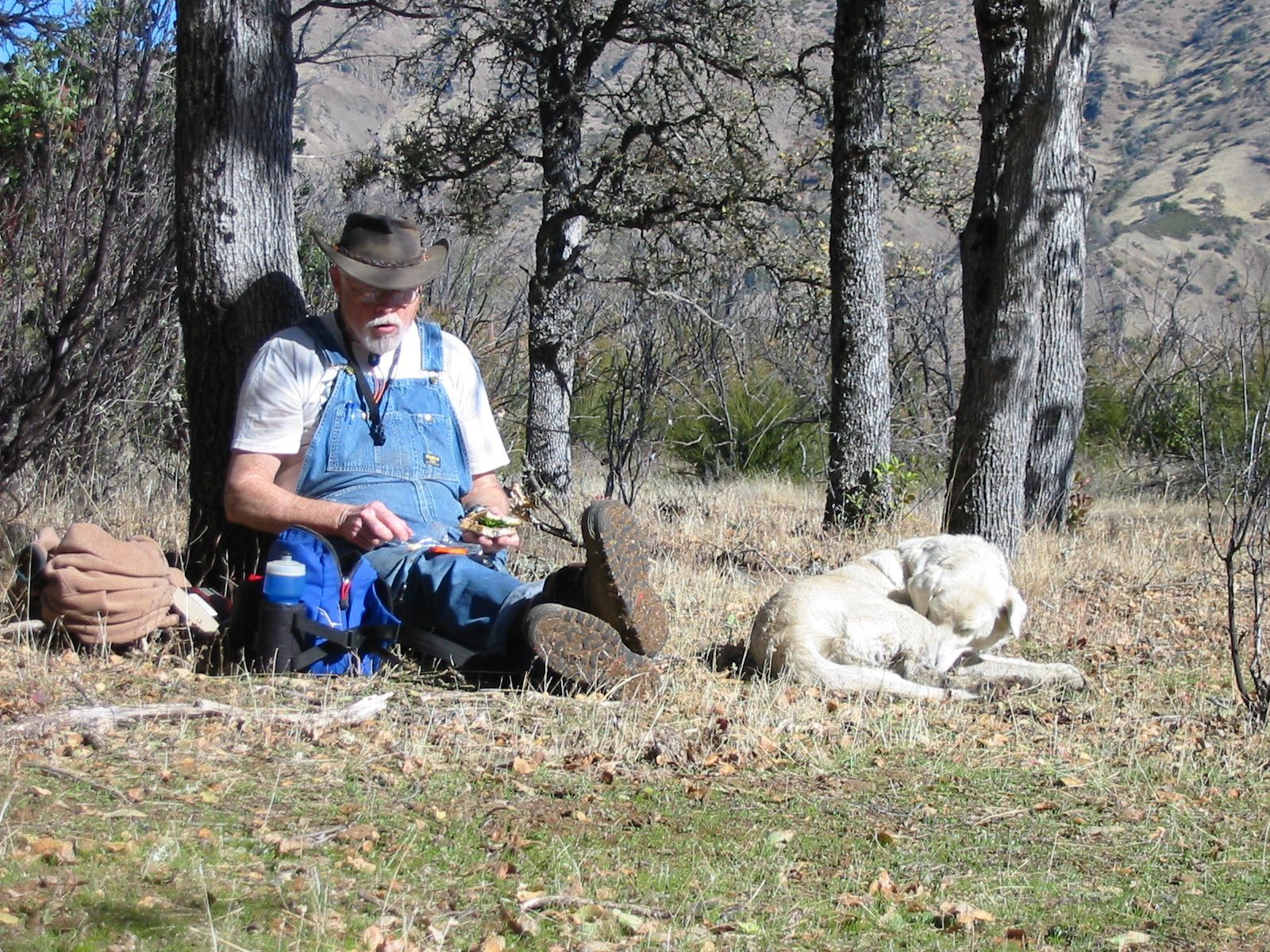Sam Bledsoe - Friend of Tuleyome

Sam Bledsoe on the Frog Pond Trail
I met Sam Bledsoe at a Hoes Down festival in the Capay Valley in the late 1990’s. We were introduced by a mutual friend, who said, “Sam loves hiking in the Blue Ridge. Thought you two should meet.”
Understatement of the year. Sam and I instantly became friends, went on hikes together, and started talking about how best to share our love of the mountains with other people.
Sam used to live near the Smokey Mountains, and he mentioned that they had a hiking club back there that was informal; if you showed up, you went with whoever else showed up. He thought that idea could work here, and I agreed. Thus, the Capay Valley Hiking Club was born. Through my Yolohiker website, Sam and I created a calendar of when each of us was hiking, and began to send out notices to our friends. Eventually, we migrated to a Google Group page, and word spread. At the peak of things we had 800 people signed up to the list. Not bad for just a couple guys and an email list!
Sam and I spent the next several years together, leading hikes throughout what is now the Berryessa Snow Mountain National Monument. This effort, among other conservation work eventually led to incorporation as Tuleyome. We at Tuleyome now continue this work to share appreciation and lead outings with the public into this region, continuing the legacy that Sam helped start through a chance meeting one fall….
One of my favorite memories with Sam was when we hiked on Walker Ridge during a snowstorm. While it was only raining gently in the Capay Valley, by the time we got to Walker Ridge, it was lightly snowing. As we parked the cars and wisely (?) decided to walk the road instead of drive it, our choice became clearly a good one as many vehicles could no longer make it as the snow came down harder. Sam and I kept hiking up the ridge, and could barely contain our excitement at being snowed on in an area more known for hot summers and manzanita-covered hills. When it came time to eat lunch, we sought refuge in the entryway of a transmitter tower. This blocked the snow enough to allow us to eat our sandwiches. While this may not seem like the most fun adventure, there really is nothing like an unexpected adventure with friends, sharing a unique experience in an area you love.
A couple of years after Sam passed in 2017, Sam’s wife, Caroline, generously supported Tuleyome in the creation of Sam’s Trail, located on the Silver Spur Ranch. Silver Spur is a property located just below where Sam and I spent that cold and glorious afternoon on Walker Ridge.
While I only touched on a small portion of Sam’s life, it was the intersection of our lives that had such a profound impact on me. I hope when you hike Sam’s Trail and enjoy the wondrous outdoors of the Berryessa Snow Mountain National Monument, you share in this impact.
Sam’s obituary in the Davis Enterprise:
https://www.davisenterprise.com/obits/lewis-j-sam-bledsoe/
Andrew Fulks
Tuleyome Volunteer Board Secretary and Co-Founder
RECENT ARTICLES






